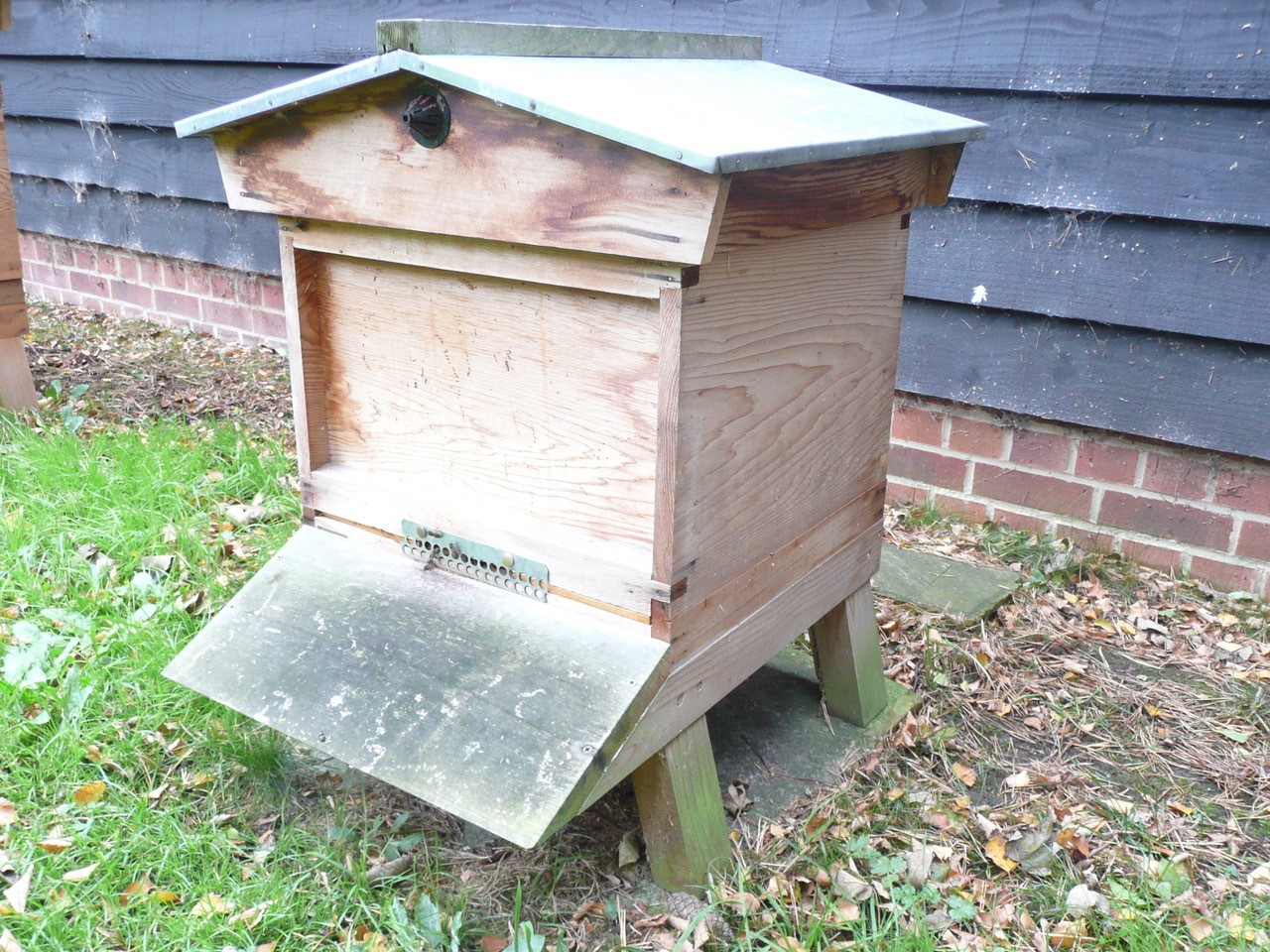Bee Blog November 2017
Hello,
I am Gerald Bushby (pronounced bush bee!) a beekeeper in Weston on the Green, a small village in Oxfordshire. I am going to be writing a monthly blog about the bees in my apiary. I hope you will find it interesting. I should start by saying that I am not an expert, having only kept bees for three years. Anything I say is my own personal opinion; I accept that there may often be other views and opinions.
Unlike wasps which all die in the winter, except the queen wasp, honey bees survive in reduced numbers compared to their summer peak. They do not hibernate however they cluster.
When the outside temperature falls to about 14degC the bees start to move closer together in the brood box. As the temperature falls lower they cluster across several of the combs in the brood box beneath their stored food. The bees consume their food stores to survive the winter. The effect of food consumption and digestion, plus muscular movements, is to generate heat which is retained within the winter cluster by the bees’ hairy bodies. As the outside temperature falls lower the bees press more tightly together, reducing both heat loss and the size of the cluster.
The bees have similar a procedure to penguins who huddle together to surviving winter blizzards. As the bees in the center of the cluster become hungry they move to the edges where the food is located and the cold bees on the edge move to the center to warm up. The bees on the outside of the cluster are just warm enough to live. As winter progresses, the cluster moves slowly upwards, keeping in contact with its stores. The center of the bee cluster is not as hot as the summer temperature of approximately 35degC but it is quite warm, in the region of 20degC.
If there are warm spells during the winter the cluster loosens and can re-form closer to the food. The waste products of digestion accumulate inside the worker bees. They wait until a warm sunny spell and then will leave the hive for a “cleansing” flight to defecate.
The workings of the inside of the honey bee hive are still not fully understood. Bees can endure very low temperatures. Honey bees are kept in Siberia. What seem to be more important to bee survival over winter is keeping dry and ventilation. Its not as simple as our residential houses however where we seek to have good heating and good ventilation to prevent internal condensation. Some studies have suggested that condensation that can form on the inside of the hive in winter is actually used by the bees as a source of water to drink.
The bees within the hive need to consume about 2kg of stores per month over winter. The beekeeper needs to ensure that they either have their own honey stores or they have to feed a supplement in the form of fondant, which is placed on a cover board on top of the brood box under the lid. It is advisable not to open the brood box during winter as this immediately reduces the internal temperature causing problems and a great expense of energy for the bees to achieve their desired temperature again.
All brood rearing stops for some period during winter. Once the brood nest has eggs and larvae, the cluster must maintain a steady temperature of 35degC inside the cluster again. If the temperature of the brood nest dips too low the brood will die.
The hive in winter is not a bad place to be. Warm and dry with a good supply of food. This desirable habitat does not escape the attention of other creatures in the garden. You will see from the photograph this month one of my winter hives with a metal plate containing holes in it fixed over that entrance to the hive. This is to stop mice entering the hive. They are generally only able to enter the hive when the bees are not active and are clustered for winter. Once in however they can cause havoc. They chew wooden parts, eat stores and bring in nesting materials. The holes in the mouse guard are just too small for a mouse’s scull but large enough so as not to impede the bees. Sorry Mr. mouse!
I am a proud supporter of the ‘Bees for development’ charity, my love of the bee drew me to this wonderful UK based charity and the great work they do around the world with Bees and the impact they can have on people’s lives. Please help me support this wonderful organisation, as 2BScientific will be doing with donations to this hard-working charity.
Next time: Who lives in the hive
